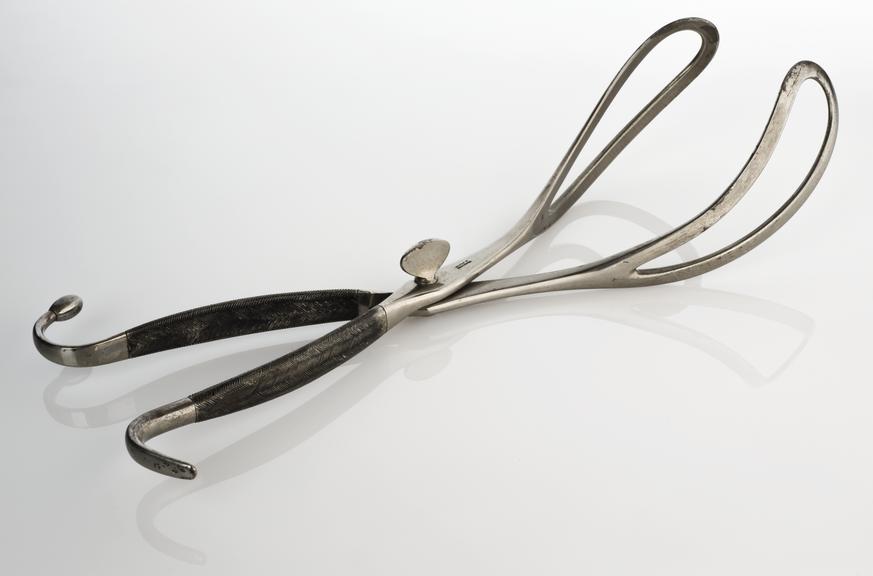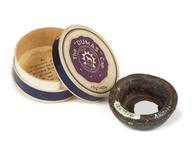


Levret delivery forceps, French, first half 19th century by Charriere
The two tong-like blades of this instrument were inserted into the mother’s birth canal and around the baby’s head. This was just like using other obstetrical forceps. The obstetrician then applied traction to ease the baby out. However, these forceps had a pronounced pelvic curve. This minimised damage or trauma to the mother. They were developed by Andre Levret (1703-1780) in 1747. This was the year he described his innovation of the pelvic curve to the Royal Academy in Paris. The forceps remained popular throughout the 1800s.
Details
- Category:
- Obstetrics, Gynaecology & Contraception
- Collection:
- Sir Henry Wellcome's Museum Collection
- Object Number:
- A158138
- Materials:
- whole, steel
- Measurements:
-
overall: 54 mm x 450 mm x 130 mm, 0.702 kg
- type:
- obstetrical forceps




